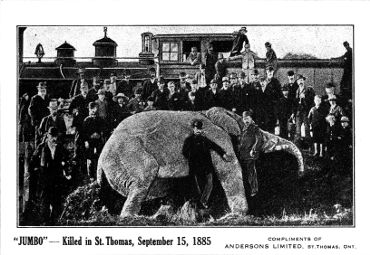Animal Facts
"The quizzical expression of the monkey at the zoo comes from his wondering whether he is his brother's keeper, or his keeper's brother."
—Evan Esar
82 results found. Go to page:
1 2 3 Ostriches never bury their heads in sand. (source)
The Falkland Islands have a human population of around 2,000 but a sheep population of 700,000, making 350 sheep for each person. (source)
The zebra used to have a close relative called the quagga. The quagga only had stripes on its head and neck, not on its entire body like the zebra. It was hunted to extinction, with the last member of the species dying in captivity in 1883. It became the first extinct animal to have its DNA studied when its DNA was extracted from mounted specimens in 1984. (source)
In 2002, a new species of centipede, Nannarrup hoffmani, was found in Central Park, in the middle of New York City, New York.
The brain of a Stegosaurus probably weighed about 2½ ounces, which would have represented 0.004% of its body weight. In comparison, the brain of a human represents about 1.88% of its body weight. (source)
During the hundred days of the opening games at the Colosseum in Rome, in 80 A.D., over 5,000 animals were killed, including elephants, tigers, lions, elks, hyenas, hippopotamuses, and giraffes. (source)
The lions used by the Romans in the Colosseum were Barbary lions, whose manes covered nearly half of their bodies. While the export of lions to Rome threatened their population, greater damage was done after Roman times, when they were killed by Arabs, encouraged by governments that exempted tribes that killed lions from taxation. The Barbary lion's last stronghold was in the Atlas Mountains, where the last true Barbary lion was killed in 1922. (source)
The Canary Islands got their name not from canaries but from the wild dogs that the Romans found when they landed there. They called the island Insulae Canariae, which means "Island of the Dogs." (source)
The ancient Vikings navigated by depending on the instincts of birds. They took on board several ravens, releasing them one at a time as they sailed westward. If the raven flew back along the course from which it had come, the Viking ships continued due west. But when a raven flew a different way, the ships would change course, following its flight path in search of new lands.

Postcard depicting Jumbo the elephant, killed in St. Thomas, September 15, 1885.
The word "jumbo" comes from the name of Jumbo the circus elephant. Jumbo was killed on September 15, 1885, after being hit by a locomotive in St. Thomas, Ontario, Canada. In 1985, a life-size (3.35 metres tall) plaster statue of Jumbo was unveiled in St. Thomas. It was sculpted in New Brunswick and, ironically, was transported to St. Thomas entirely by truck. (source)
The kiwi is the only bird with nostrils at the tip of its beak. While other birds hunt by sight or hearing, the kiwi, which is the national bird of New Zealand, uses its nostrils to smell food at night. Although the kiwi is about the same size as a chicken, it lays eggs ten times larger than a hen's. (source)
The animals responsible for the most human deaths is not the snake or the bear or any large creature, but rather the tiny mosquito. Its bites transmit malaria and yellow fever, resulting in over five million deaths yearly. (source)
Lobsters feel pain when being boiled alive; however, you can anesthetize them by soaking them in salt water before cooking. (source)
The oldest individual animal with a known age was a specimen of ocean quahog (Arctica islandica) that was discovered in 2006. It was determined to be 507 years old. (source)
The ivory-billed woodpecker is one of the most elusive animals. It was believed to be extinct since the 1930s due to the loss of its natural habitat, but in 2004 and 2005 it was sighted in Arkansas and Florida. Attempts to confirm these sightings have not been successful. (source)
The rhinoceros beetle is able to support 850 times its weight on its back. (source)
A deep-sea fish, Chiasmodon niger, popularly known as "black swallower," is able to swallow fish two or three times its size. (source)
In general, animals die more quickly from lack of sleep than from lack of food.
Some species of bats hibernate on a daily basis. (source)
In 1881, a Nice schoolmaster formed among his pupils a society for the protection of vegetation. Over the course of four months that year, the children protected vegetation by destroying 4,555 belts of moth eggs (containing an estimated 1,363,500 eggs), 194,328 cabbage butterfly larvae, 1,582 grasshoppers, 629 butterflies, 58,911 slugs and snails, 1,274 grubs, and 35,721 other insects. (source)
An ant, watched from 6:00 a.m. to 9:45 p.m., worked constantly. (source)
Prairie dogs can dig to a depth of 200 feet for water. (source)
82 results found. Go to page:
1 2 3

